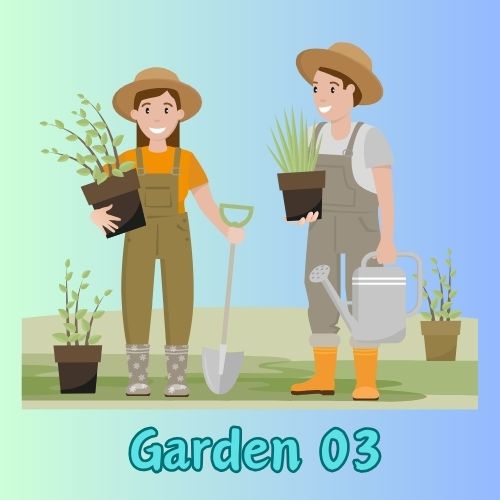Calendula, also known as pot marigold, is a vibrant flower that has been cherished for centuries for its medicinal, culinary, and ornamental uses. With its bright yellow and orange blossoms, calendula not only adds beauty to your garden but also serves as a versatile herb. Harvesting calendula correctly is crucial to preserving its potency and ensuring the plant continues to produce more blooms throughout the growing season.
In this comprehensive guide, Garden 03 wIll walk you through everything you need to know about how to harvest calendula, from understanding the best time to pick the flowers to tips on drying and storing them for later use. This SEO-friendly article will not only help you get the most out of your calendula crop but also optimize your knowledge for all the potential benefits of this remarkable plant.
1. What is Calendula?
Before diving into how to harvest calendula, it’s helpful to understand a little more about the plant itself. Calendula is a member of the daisy family (Asteraceae) and is native to Mediterranean regions. It’s widely cultivated worldwide for its cheerful flowers, which are used for both ornamental and practical purposes.
Benefits of Calendula
Calendula flowers have numerous uses:
- Medicinal: Calendula is known for its healing properties, particularly in treating skin irritations, wounds, and burns. It has anti-inflammatory, antimicrobial, and antifungal benefits.
- Cosmetic: It is commonly used in homemade skincare products, including balms, creams, and oils.
- Culinary: Calendula petals are edible and can be used to brighten up salads, soups, and teas.
- Companion Planting: Calendula is a great companion plant in the garden, attracting beneficial insects and repelling pests.
With so many uses, learning how to harvest calendula correctly is essential to fully reap its benefits.
2. When to Harvest Calendula
Timing is key when it comes to harvesting calendula. Knowing exactly when to pick the flowers ensures that you capture the plant’s maximum medicinal potency and encourages continual blooming.
Best Time of Year to Harvest
Calendula blooms from early summer to late fall, depending on your climate. The flowers are usually ready to harvest about 6-8 weeks after planting. Harvesting regularly throughout the growing season will encourage the plant to produce more flowers.
Best Time of Day to Harvest
The ideal time to harvest calendula is mid-morning, after the dew has dried but before the midday sun hits its peak. The flowers are fully open by this time, and the heat hasn’t caused them to wilt or lose moisture. Harvesting in the morning helps preserve the potency of the plant’s essential oils, which are at their peak during this time.
Signs the Calendula is Ready to Harvest
Calendula flowers should be fully open and vibrant when you harvest them. Look for blooms that are completely unfurled, with petals that are bright and firm. Avoid harvesting flowers that are just budding or those that are past their prime and starting to wither.
3. Tools Needed for Harvesting Calendula
Harvesting calendula doesn’t require any fancy tools, but having the right equipment will make the process smoother and help maintain the quality of your flowers.
Tools to Use
- Sharp scissors or garden snips: A clean, sharp tool will ensure a clean cut, which is crucial for both the health of the plant and the preservation of the flower heads.
- Basket or tray: A shallow basket or tray is ideal for collecting calendula flowers. Avoid using deep containers that can crush the delicate petals.
Why Use Sharp Tools?
Using sharp tools ensures that you make a clean cut, which helps the plant heal quickly and encourages continuous blooming. Dull blades can damage the stem and reduce the plant’s productivity.
4. How to Harvest Calendula: Step-by-Step Process

Now that you know when and what tools to use, let’s walk through the process of harvesting calendula. Follow these simple steps to gather your flowers efficiently and safely.
Step 1: Select the Right Flowers
Look for flowers that are fully open and vibrant. Avoid those that are just budding or have started to fade.
Step 2: Cut the Flower Heads
Using your sharp scissors or garden snips, cut the flower heads just above the first or second set of leaves. Leaving enough stem will encourage new growth and more blooms throughout the season.
Step 3: Handle the Flowers Carefully
Calendula flowers are delicate, so be gentle when handling them. Place the harvested flowers in your basket or tray, ensuring they’re not crushed or stacked too deeply.
Step 4: Harvest Regularly
Calendula flowers will continue to bloom if harvested regularly. Aim to pick flowers every 2-3 days during peak blooming season to keep the plant producing more blossoms. Regular harvesting not only ensures a steady supply of calendula but also keeps the plant healthy and thriving.
5. How to Dry Calendula Flowers
Drying your calendula flowers is the best way to preserve them for long-term use in teas, oils, or salves. Here’s how to dry calendula effectively to maintain its medicinal properties.
Air Drying
The most common method for drying calendula is air drying, as it’s simple and requires no special equipment.
- Step 1: Spread the freshly harvested flowers in a single layer on a drying rack or mesh screen. Ensure that the flowers are not overlapping to promote good air circulation.
- Step 2: Place the drying rack in a warm, well-ventilated area out of direct sunlight. Exposure to sunlight can degrade the flowers’ medicinal properties.
- Step 3: Allow the flowers to dry for about 1-2 weeks. Turn them occasionally to ensure even drying.
- Step 4: Once fully dry, the petals should feel crisp and papery. If the flowers still feel soft or pliable, give them more time to dry.
Using a Dehydrator
For quicker results, you can use a food dehydrator set to a low temperature (about 90-100°F). Spread the calendula flowers on the dehydrator trays in a single layer and let them dry for several hours until crisp.
6. How to Store Dried Calendula
Proper storage is essential to keep your dried calendula fresh and potent. Once your calendula is completely dry, transfer it to an airtight container, such as a glass jar or sealed bag. Store the container in a cool, dark place away from direct sunlight or moisture. This will help preserve the flower’s color, fragrance, and medicinal properties for up to a year.
Label your containers with the date of harvest so you can keep track of freshness. Calendula is best used within a year, as its potency will decrease over time.
7. Using Your Harvested Calendula
Now that you know how to harvest calendula, it’s time to put your flowers to good use! Calendula is a versatile herb with a wide range of applications, including:
Making Calendula Oil
Infusing calendula petals in oil is one of the most popular ways to use the plant. Calendula oil can be applied topically to soothe skin irritations, cuts, and burns.
- Step 1: Fill a glass jar with dried calendula petals, and cover them with a carrier oil such as olive oil, almond oil, or sunflower oil.
- Step 2: Seal the jar and place it in a sunny window for about 4-6 weeks to allow the petals to infuse the oil.
- Step 3: Strain the oil through a fine mesh or cheesecloth, and store it in a dark, airtight container.
Calendula Tea
Calendula tea has a light, refreshing flavor and is known for its anti-inflammatory and immune-boosting properties.
- Step 1: Add 1-2 teaspoons of dried calendula petals to a cup of boiling water.
- Step 2: Let the tea steep for about 10 minutes, then strain and enjoy.
- Optional: Add honey or lemon for flavor.
Calendula Salve
Calendula salve is a natural remedy for minor cuts, scrapes, burns, and skin irritations.
- Step 1: Melt beeswax and calendula-infused oil together in a double boiler.
- Step 2: Pour the mixture into small tins or jars, and allow it to cool and solidify.
- Step 3: Apply the salve to affected areas as needed.
8. Common Mistakes to Avoid When Harvesting Calendula
Learning how to harvest calendula properly means avoiding common mistakes that can reduce the plant’s health and effectiveness.
Harvesting Too Early
Avoid picking the flowers too early when they’re still in bud form. Flowers that haven’t fully bloomed lack the medicinal potency and vibrant color that make calendula so beneficial.
Waiting Too Long
On the other hand, waiting too long to harvest the flowers can result in wilted, discolored petals and reduced potency. Harvest regularly to catch the flowers at their peak.
Not Harvesting Enough
Calendula plants thrive when regularly harvested. By not picking the flowers, you may inadvertently slow down new growth and reduce overall yields. Regular harvesting encourages more blossoms, ensuring you get a continuous supply throughout the growing season.
Conclusion
Calendula is a beautiful and versatile herb that offers numerous benefits, from healing salves to soothing teas. Harvesting it properly is key to maximizing its potential. By picking fully bloomed flowers regularly, using sharp tools, and drying them carefully, you can ensure a steady supply throughout the growing season. Whether for medicinal, cosmetic, or culinary use, mastering the art of harvesting calendula will help you make the most of this vibrant plant. With proper care, you’ll enjoy its benefits all year long. Happy harvesting!





